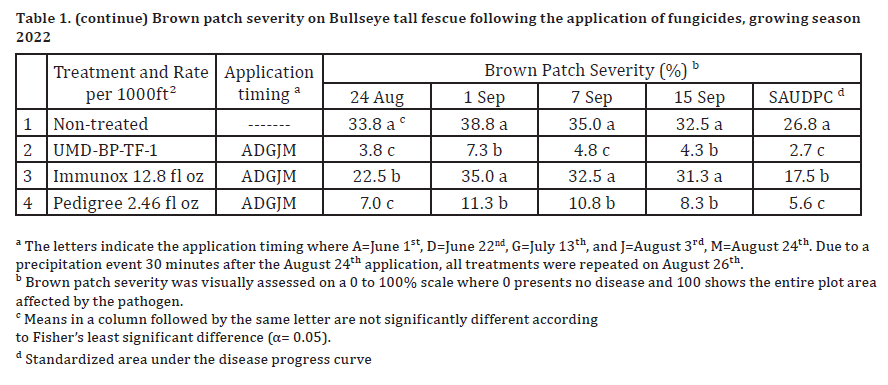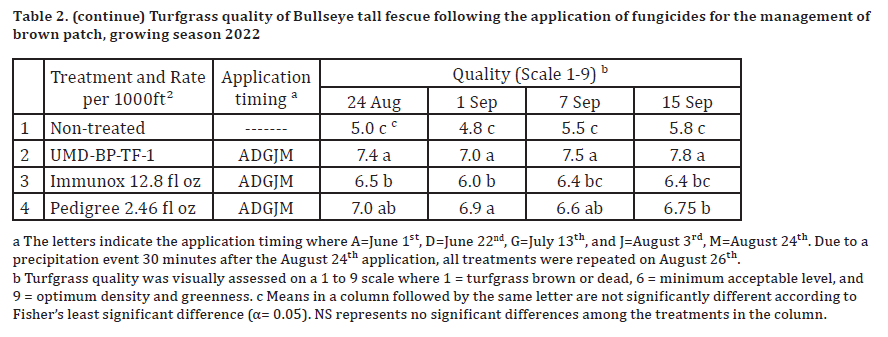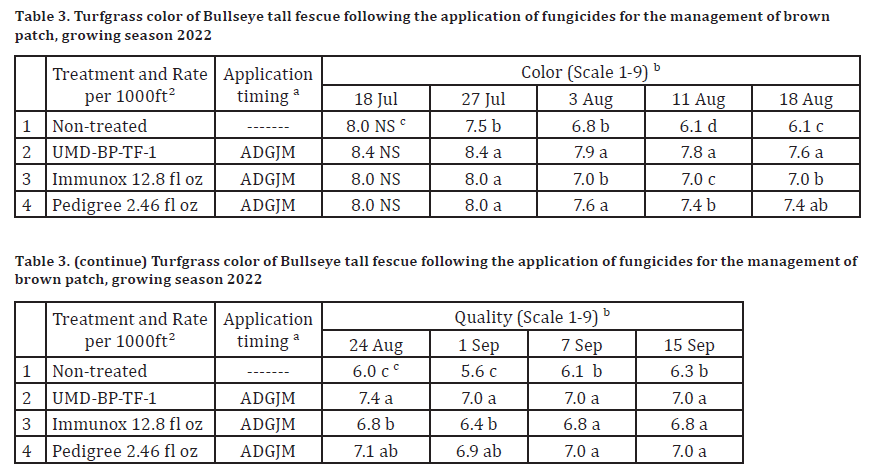Evaluation of New and Commercial Fungicides for the Management of Brown Patch (Rhizoctonia solani)
Fereshteh Shahoveisi, Department of Plant Sciences and Landscape Architecture, University of Maryland, College Park
Brown Patch (caused by the fungus Rhizoctonia solani) could be devastating to several turfgrass species including tall fescue. A field study was designed and conducted at the Paint Branch Turfgrass Facility (University of Maryland) to evaluate the efficacy of a new and two commonly available fungicides in the management of the disease. Tall fescue cv. Bullseye with a 3-inch height of cut was used to test fungicides; a non-treated control was also included.
Treatments were applied approximately every 21 days beginning June 1st until August 26th, 2022. A total of 1.5 gal /1000 ft2 fungicides in 3×6 feet plots were sprayed at each application using a CO2 backpack sprayer equipped with a Teejet AI9506E nozzle. A randomized complete block design with four replications was used. Brown patch disease severity (percentage), quality and color (1-9 scale) were measured every two weeks after disease onset in mid-July until three weeks after the last application. Urea fertilizer was applied twice (0.9 lb/ 1000 ft2 on June 6th and 0.5lb/ 1000 ft2 on July 6th). The experiment was concluded on September 15th as the disease severity did not progress. Analysis of variance and Fisher’s least significant difference (LSD) procedure at α= 0.05 were used to compare the treatments in their efficacy in managing brown patch and improving the quality and color of turfgrass. Rank transformations were used for non-parametric data including quality and color.
The brown patch severity was relatively low until late July but the favorable weather environment increased the disease pressure in non-treated plots by early August. Among the treatments, non-treated control resulted in the highest disease severity compared to treated plots. In general, Pedigree and UMD-BP-TF-1 had significantly better disease management compared to non-treated. They also outperformed Immunox later in
the season but differences were not significant early in the season when disease pressure was lower. The standardized area under the disease progress curve (SAUDPC) indicated that Pedigree and UMD-BP-TF-1 had an overall better performance in managing the disease over time (Table 1).
There were no significant differences among the quality and color of the treated and nontreated plots until July 18th. The quality and color of turfgrass in the non-treated plots started to decline later in the season when disease severity was higher. In general, plots treated with UMD-BP-TF-1 followed by Pedigree had better quality and color scores compared to non-treated and Immunox where some of these differences were statistically significant. (Tables 2 and 3).






